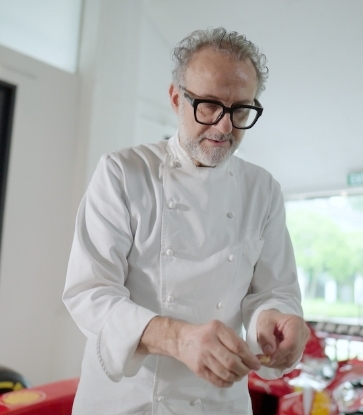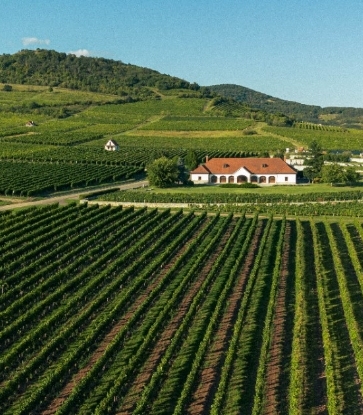Congratulations to Bill Jensen, the recipient of this year's Washington, D.C. Sommelier Award presented by Wine Access! Jensen is the beverage director and co-owner of One MICHELIN Star Tail Up Goat and MICHELIN Plate Reveler's Hour. His somm style looks beyond the wine itself to the stories and the people that sum up what's in that glass. Tail Up Goat features a focused wine program that rotates its offering and strives to feature smaller wineries with sustainability in mind. Wines by the glass are given descriptive and clever names, just as a cocktail menu would boast. On Sundays Jensen hosts wine school sessions that are ‘a weekly helping of wine wisdom and levity’. At Reveler’s Hour, the wine list can have up to 50 selections by the glass in a clever ‘non-committal’ style whose theme changes constantly. The wine menu is made of a collection baseball cards, but with wine stats—region, producer, importer, etc. Here's Bill on natural wines, sherry with heirloom rice, and the structural changes the wine industry needs to make to be more inclusive.

What have you been drinking recently?
My regular drinking has been informed by our wine classes here. Every weekend we’ve been running virtual wine school. A couple of weeks ago we did a collaboration with a local wine shop, Domestique, of California wines through the ages, so trying old school California wines I hadn’t tried before, and some of the new California staples like Matthiasson, Donkey & Goat, Broc Cellars, etc. Having a wine shop, you can indulge in whatever flight of fancy you want to. It’s a fun and dangerous position to be.
What’s your favorite non-alcoholic drink?
Coffee—a cortado. I usually have one in the morning and one in the early afternoon. I get wired easily.
What are your thoughts on natural wines?
I think the term itself is problematic. It’s as much a marketing vehicle as it is a movement. It’s important to understand natural wine in context. It was very much a necessary reaction to the way a lot of wine is being manipulated and sold, especially in the old world. It’s a push against the more elitist tendencies the wine industry has, and this is hugely important. I love natural wine, but the pitfall is, it’s become synonymous with a certain flavor profile. The elephant in the room is sulfur usage. I’m not dogmatic about that. I’d rather drink something that has sulfur added and is clean than goes without and is flawed. Equally, I don’t think you should denigrate or lose sight of more classic wines for the sake of chasing a cool label. I’d like to move beyond a blanket “natural” label and have an undogmatic conversation about the choices made in the cellar, and how that affects what ultimately goes into the glass.

What’s the biggest misconception about being a sommelier, or wine in general, that you’d like to dispel?
First and foremost that it is an elitist industry or entity. There are certainly barriers to entry—the cost of land on the production side, and the cost of the product itself—but there is a universality to the experience of taste. The second [misconception] is, there’s only one way to be a wine professional. They assume the people that do what I do went the Court [of Master Sommeliers) track. I deeply respect a lot of people who have gone through that certification process, but it’s been a really problematic organization for the industry [the Court has been embroiled in a sexual harassment and abuse scandal]. There is a really important need for certification agencies, but I think the industry deserves better than the Court. The Wine & Spirits Education Trust and the Institute of Masters of Wine are both great alternatives. I love the fact that the wine industry, the restaurant industry brings people from all walks of life. A lot of people come to wine as a second career and are equipped to engage it on a number of different levels. We should seek to honor these diverse experiences as much as possible through this singular beverage.
What’s your criteria for adding a new wine to your list?
Something that excites me. I always think in terms of value-added. You want to find something that punches above its weight, whether that’s a $50 Cru Beaujolais or a $10 sauvignon blanc, especially in a restaurant setting where you’re going to mark it up quite a bit. We don't have any hard and fast rules for what we bring in. Most are bottled with added sulfur, but some are not. Almost all are fermented with native yeast, but a handful are inoculated. There's no single recipe for a great wine any more than there's a single way to write a great poem. They all come from passionate artisans, speak to a sense of place, and the production process doesn't contribute to human misery. Each in their own way, they have something compelling and distinct to offer wine lovers.

What wine or drinking trends do you see on the horizon?
Above and beyond a particular drink or beverage, structural changes in the industry are the most important movement I’d hope to see. Making wine more inclusive, looking at the labor of wine, how it comes to the table, who is doing most of that work in the vineyard in particular, how to create opportunities for those people to receive of their work and advance in a career in the industry, and all the environmental and sustainability issues that come with monoculture. And then making wine fun—something that people can opt into and they don’t feel intimidated by.
What is your favorite unexpected or surprising food and wine pairing?
We moved to a fixed price menu during covid and have been doing pairings with that. It's a lot of fun. I’ve fallen in love with sherry all over again. It just works with food in these seemingly counterintuitive ways and I adore that about it. I really like is this heirloom rice dish we’re serving with Oregon white truffles. It’s a very luxurious dish, but we decided it went really well with an entry-level fino sherry. The autolytic action of that yeast you get on a pinot, that texture is really beautiful with the rice and the truffles. I love the high meets low. We've been working with a lot of red wines with winter root vegetables, like smoked fingerling sweet potatoes. People like to pigeonhole veg with white wine, but we paired those sweet potatoes with an amphora-aged Portuguese red, which was super cool. The smoky, savory meatiness of the sweet potato works well with the same qualities of the wine.

What pandemic-era adaptations to wine service, restaurants etc., would you want to see made permanent?
[We’ve been able] to function as a retail outlet and it's been amazing. Someone comes in for a glass of wine and, at the end of the meal, you can offer them a bottle or two of something they like. It enhances the dining experience and allows the restaurant to profit. I would love to continue to see that. We’ve also done almost 50 of these online wine lessons, with winemakers from Georgia to Hawaii and everywhere in between. They’re old friends, and it’s incredible to be able to connect with them and share their perspectives with our community of guests who love what we do.

What’s your ideal meal and pairing?
My first restaurant job was at 2Amys, a Neapolitan pizza restaurant in DC, so my ideal meal would be sitting at the bar at 2Amys. They have these simple Calabrian anchovies they debone themselves, served with their wood-fired bread and salted butter. I’d start with a really mineraly, bracing white. Then I’d have a few small plates and move onto a lighter red with some age, something savory and food friendly, and then I’d go for pizza. I’d finish off with their great homemade gelato and an amaro, maybe an espresso.


Hero image: Bill Jensen. Photo by Vanessa Conlin
- Find every restaurant in the Washington, D.C. MICHELIN Guide.
- Keep up to date on the 2021 MICHELIN Star Revelation in Washington, D.C., Chicago, and New York.
- Download the new MICHELIN Guide app and get ready to eat well. Available now in the App Store and very soon for Android.
- Meet chef Brad Deboy of Bib Gourmand Ellē





















